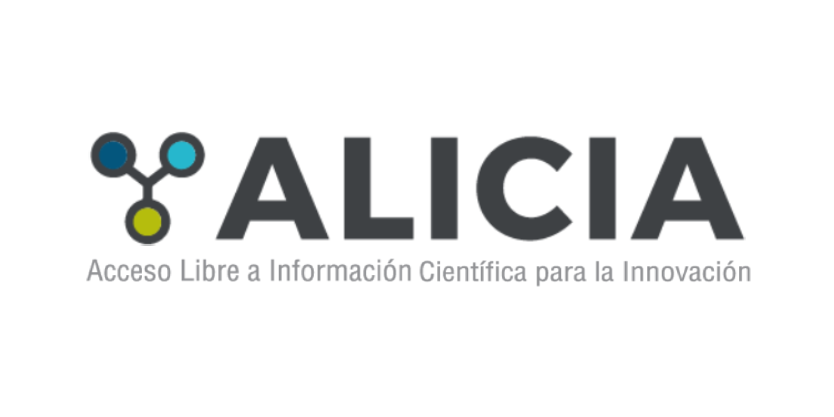Recent Submissions
Gestión municipal y calidad del servicio en la municipalidad distrital de Castillo Grande
(Universidad Nacional Agraria de la Selva, 2025) Espinoza Rivera, Consuelo Maria; Mucha Huaman, Walter Eduardo
El objetivo fue establecer la correspondencia entre la gestión municipal y la calidad del servicio en la Municipalidad Distrital de Castillo Grande. Metodología: El tipo de investigación fue aplicado de nivel relacional con un diseño no experimental y enfoque cuantitativo. Se empleó como muestra a 242 usuarios utilizando la inferencia estadística de los rangos de Rho de Spearman. Para la obtención de los datos se usó un cuestionario de 27 ítems con opciones de escala ordinal. Resultados: Los hallazgos confirmaron una asociación entre la gestión municipal y la calidad de servicios, con un nivel alto (Rho=0,847). De manera parecida, las hipótesis específicas muestran correlaciones fuertes. Hipótesis específica 1: la calidad de los servicios y el desarrollo organizacional (Rho=0,783); hipótesis específica 2: la dimensión financiera municipal y la calidad de los servicios (Rho=0,779); hipótesis específica 3: la dimensión de los proyectos y servicios y la calidad de estos (Rho=0,718); hipótesis específica 4: la dimensión de gobernabilidad democrática y la calidad de los servicios (Rho=0,151). Concluyendo que hay una correlación significativa entre la gestión municipal y la calidad de los servicios en la municipalidad distrital de Castillo Grande.
El sobreendeudamiento y su impacto en la situación económica de los usuarios de créditos en la financiera Proempresa, agencia Tingo María
(Universidad Nacional Agraria de la Selva, 2025) Lozano Doria, Yoshira Eulicia; Montero Vilchez, Eladio Dionicio
La tesis denominada el sobreendeudamiento(SE) y su impacto en la situación económica de los usuarios de créditos en la Financiera Proempresa, agencia Tingo María”, como OGse planteó; identificar de qué manera el sobreendeudamiento afecta la situación económicade los usuarios de servicios crediticios.Los resultadosquese obtuvieron en la investigación,con el RS existe una negativa media (-0.507), es decir ante el aumento delsobreendeudamiento la situación económica empeorará. Con respecto al primer objetivoespecífico, según se observa que existe una correlación Rho Spearman existe unacorrelación negativa muy débil a débil (-0.406), es decir ante mejores políticas de crédito lainsolvencia de pago disminuirá. Para el segundo objetivo específico RS existe unacorrelación positiva media (0.596), es decir ante el incremento de los prestamos múltiples lainestabilidad del pago también se incrementará con levedad. Para el último objetivoespecífico, RS existe unacorrelación negativa muy débil (-0.052), es decir; ante un escasoaumento de la educación financiera mínimamente será la reducción de la exclusiónfinanciera (en sentido inverso).
Variación de la cobertura vegetal durante los años 2018 y 2023 mediante imágenes lanetscope en cinco provincias del departamento Huánuco, Perú
(Universidad Nacional Agraria de la Selva, 2025) Arevalo Guevara, Jhamilt Robinson; Puerta Tuesta, Ronald Hugo
El presente estudio tuvo como objetivo analizar la variación de la cobertura vegetal durante los años 2018 y 2023 en cinco provincias del departamento de Huánuco: Pachitea, Huánuco, Dos de Mayo, Huamalíes y Huacaybamba. Para ello, se emplearon imágenes satelitales PlanetScope y el algoritmo Random Forest dentro de la plataforma Google Earth Engine. La investigación se desarrolló bajo un enfoque cuantitativo, con diseño no experimental, descriptivo y comparativo. Se cuantificaron las coberturas de bosque, no bosque e hidrografía para ambos periodos, evidenciándose una reducción significativa de la superficie boscosa, así como un incremento en la categoría hidrografía, asociado tanto a factores naturales como a aspectos técnicos de clasificación, como la confusión entre agua y sombras. La validación de la clasificación arrojó una Exactitud Global del 86,11 % para el año 2018 y del 91,32 % para 2023, con un aumento en el índice de Kappa de 0,792 a 0,870, reflejando mejoras en la precisión. El análisis multitemporal permitió identificar procesos de transformación del paisaje, vinculados a la expansión de áreas no boscosas y la reducción de la cobertura forestal, lo que plantea desafíos para la gestión ambiental y el ordenamiento territorial. Finalmente, se destaca la importancia de la integración de métodos de validación en campo y el uso de herramientas geoespaciales para la toma de decisiones en el manejo sostenible del territorio.
Proyecto de transferencia tecnológica en mejoramiento genético de ganado vacuno y calidad de vida de la población beneficiaria de la microcuenca del Nupe Y Lauricocha, 2023
(Universidad Nacional Agraria de la Selva, 2025) Diaz Caycho, Karina Abigail; Panduro Ramírez, Tedy
La presente investigación evaluó el impacto de un proyecto de transferencia tecnológica en mejoramiento genético de ganado vacuno sobre la calidad de vida de productores ganaderos en la microcuenca del Nupe y Lauricocha, distrito de Jesús, provincia de Lauricocha, región Huánuco, durante el año 2023. Se empleó un enfoque cuantitativo con diseño no experimental, comparativo y longitudinal, aplicando el método de diferencias en diferencias (DiD) para medir el efecto causal del proyecto sobre los ingresos de los beneficiarios. La muestra estuvo conformada por 234 productores ganaderos, divididos en dos grupos de 117 beneficiarios y 117 no beneficiarios. Los datos se recolectaron mediante encuestas estructuradas que midieron el ingreso promedio mensual antes y después de la intervención, y fueron analizados utilizando Microsoft Excel y SPSS. Los resultados demostraron que el proyecto generó un incremento neto de S/ 359.94 en los ingresos mensuales de los beneficiarios, representando un aumento del 42.43% respecto al grupo control, lo que confirma que la transferencia tecnológica en mejoramiento genético contribuye significativamente a la mejora de los ingresos y la calidad de vida de la población rural. Se concluye que la implementación de proyectos de esta naturaleza, acompañados de asistencia técnica continua y acceso a insumos de calidad, constituye una estrategia efectiva para el desarrollo productivo y socioeconómico en comunidades rurales, hallazgos que son consistentes con la evidencia nacional e internacional sobre la relación positiva entre innovación tecnológica agropecuaria y bienestar socioeconómico.
Redes ecológicas de polinización en ecosistema de lomas como bioindicador de estado de conservación, Atiquipa, Caravelí, Arequipa, 2024
(Universidad Nacional Agraria de la Selva, 2025) Zea Fernandez, Miriam Giovanna; Chuquilin Bustamante, Edilberto; Wong Soto, Akira Armando
Las Lomas son considerados como ecosistemas únicos con complejas relaciones biológicas, y sustentan su relevancia ecológica por brindar múltiples servicios ecosistémicos a la población; entre ellos, la polinización. Estos espacios son atractivos para la actividad antrópicas, ocasionando la perturbación a las poblaciones de polinizadores. En este estudio se describe la estructura de la red ecológica de polinización en el área de conservación privada Lomas de Atiquipa. Se establecieron dos transectos compuestos por seis subtransectos de 50 metros de longitud y tres metros de ancho, se registraron todas las especies de plantas en antesis y sus
visitantes florales. A partir de estos datos se caracterizó parámetros de estructura y funcionalidad de la red; tanto a nivel de red como a nivel de especie, se evaluó los roles de las especies dentro de la red. Los resultados mostraron que la red presenta estructura compleja, moderadamente anidada y especialista, pero con gran cantidad de especies generalistas, lo que la hace robusta y poco vulnerable a la pérdida de especies e interacciones. Además, muestra 15 especies de plantas indicadoras para la red, de las cuales, ocho son endémicas y cuatro se encuentran en alguna categorización de amenaza. El estado de conservación del ecosistema de lomas de Atiquipa es alto. Este conocimiento permite mejorar la comprensión de los procesos ecológicos básicos del ecosistema y orientar dentro del Plan de Gestión del Area de Conservación Privada, el manejo y aprovechamiento de Tara spinosa; asi como, la conservación y protección de especies indicadoras para la red y el control y vigilancia de Apis mellifera







